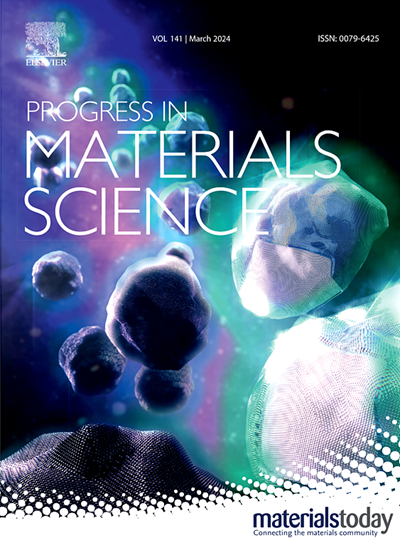可充电电池的高熵概念
IF 40
1区 材料科学
Q1 MATERIALS SCIENCE, MULTIDISCIPLINARY
引用次数: 0
摘要
开发革命性的充电电池技术对于实现碳中和社会至关重要。尽管过去几十年来各种可充电电池取得了重大进展,但电化学稳定性、离子/电子传导性、反应速率、晶相稳定性等仍是主要挑战。高熵的概念凭借其独特的特性,已成为应对各种充电电池科学和工程挑战的新方法。本综述旨在及时、全面地介绍充电电池中高熵材料/策略的特性、开发和应用。文中介绍了高熵的基本概念,包括高熵材料、高熵掺杂/替代、高熵稳定、高熵互锁、高熵液体等。系统介绍了充电电池(包括锂/纳/钾/锌离子电池、锂-S 电池、锂-O2 电池和锌-空气电池)中高熵概念的最新发展,涵盖正极材料、负极材料、液态电解质、固态电解质和催化剂,重点介绍了高熵在解决具体科学/工程问题中的作用和原理。总结了它们在电池应用中的独特性质和功能,并提出了高熵概念在可充电电池中的挑战和机遇,以促进这一有趣领域的发展。本文章由计算机程序翻译,如有差异,请以英文原文为准。
The concept of high entropy for rechargeable batteries
The development of revolutionary rechargeable battery technology is essential for achieving a carbon-neutral society. Despite significant progress in diverse rechargeable batteries over the past decades, electrochemical stability, ionic/electronic conductivity, reaction rates, crystal phase stability, etc. remain major challenges. The concept of high entropy has emerged as a new approach to addressing diverse scientific and engineering challenges of rechargeable batteries by virtue of its unique properties. This review aims to provide a timely and comprehensive understanding of the properties, development, and applications of high entropy materials/strategies in rechargeable batteries. The fundamental concepts of high entropy, including high entropy materials, high entropy doping/substitution, high entropy stabilization, high entropy interlocking, high entropy liquids, etc. are introduced. The state-of-the-art development of high-entropy concepts in rechargeable batteries, including Li/Na/K/Zn-ion batteries, Li-S batteries, Li-O2 and Zn-air batteries, covering anode materials, cathode materials, liquid electrolytes, solid electrolytes, and catalysts are systematically introduced, with an emphasis on the role and principles of high entropy in solving specific scientific/engineering problems. Their unique properties and functions for battery applications are summarized, and challenges and opportunities of high entropy concepts for rechargeable batteries are also proposed to promote the development of this intriguing field.
求助全文
通过发布文献求助,成功后即可免费获取论文全文。
去求助
来源期刊

Progress in Materials Science
工程技术-材料科学:综合
CiteScore
59.60
自引率
0.80%
发文量
101
审稿时长
11.4 months
期刊介绍:
Progress in Materials Science is a journal that publishes authoritative and critical reviews of recent advances in the science of materials. The focus of the journal is on the fundamental aspects of materials science, particularly those concerning microstructure and nanostructure and their relationship to properties. Emphasis is also placed on the thermodynamics, kinetics, mechanisms, and modeling of processes within materials, as well as the understanding of material properties in engineering and other applications.
The journal welcomes reviews from authors who are active leaders in the field of materials science and have a strong scientific track record. Materials of interest include metallic, ceramic, polymeric, biological, medical, and composite materials in all forms.
Manuscripts submitted to Progress in Materials Science are generally longer than those found in other research journals. While the focus is on invited reviews, interested authors may submit a proposal for consideration. Non-invited manuscripts are required to be preceded by the submission of a proposal. Authors publishing in Progress in Materials Science have the option to publish their research via subscription or open access. Open access publication requires the author or research funder to meet a publication fee (APC).
Abstracting and indexing services for Progress in Materials Science include Current Contents, Science Citation Index Expanded, Materials Science Citation Index, Chemical Abstracts, Engineering Index, INSPEC, and Scopus.
 求助内容:
求助内容: 应助结果提醒方式:
应助结果提醒方式:


